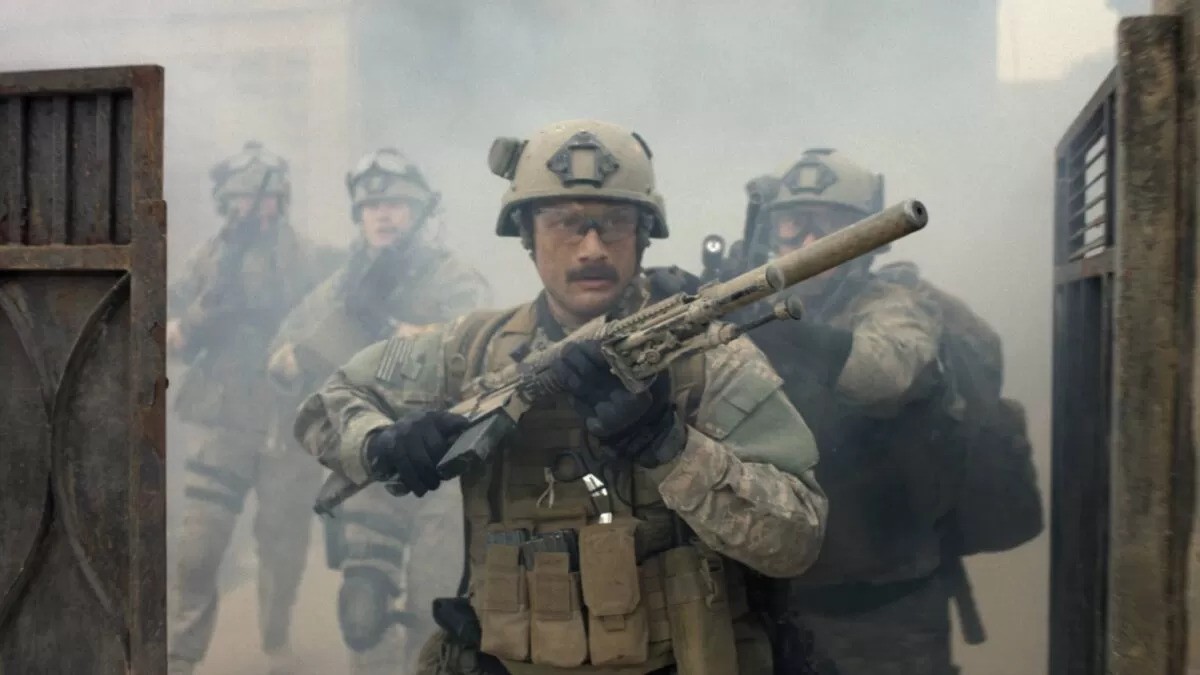'Warfare' review: The tensest, most visceral war film since 'Saving Private Ryan'

The most anxiety-inducing moment in Warfare is caused by a combination of different sounds — radio chatter, a man incessantly screaming in pain, and gunfire. It's one of the tensest situations in the film set during the Iraq War, in 2006. Directed by Ray Mendoza and Alex Garland, Warfare is the most visceral, suspenseful war film I've seen since Saving Private Ryan.
By this comparison, I'm not implying that both films are alike in scope; it's that the terrifying and nightmarish ordeal experienced, in real-time, by a platoon of U.S. Navy SEALs is reminiscent of a particularly chilling scenario from the Steven Spielberg film. I'm not going to say which because it's better to dive into this film — based on Ray Mendoza's own experiences as a Navy SEAL — by knowing little to nothing about it.
Warfare begins with nearly 30 minutes of a surveillance operation undertaken by a Navy SEAL team holed up inside a house looking out for suspicious activity. This approach might test the patience of those low on attention, but the rest will find why the two filmmakers opted to begin the film this way and why it had to be of this duration. Staged in absolute stillness, save for the brief interactions between the team members, these opening moments provide a striking contrast to the chaos and bloodshed about to follow.
In short, things go south soon, with heavy casualties — except for a tiny blurred scene in Indian theatres, the graphic portions were not, thankfully, excised — and Warfare turns into a survival drama where the surviving members have to call for help and handle the severely wounded while dealing with the mounting dread and preparing for the possibility that they might not get out alive.
If this was intended as a high-impact depiction of the horror of war, Mendoza and Garland have succeeded. They bring an impressive measure of tangibility to their depiction of causalities which gets more prominence than the scenes where the SEALs have to engage the insurgents attacking from the houses situated across.
Mendoza and Garland, aided by their director of photography David J. Thompson, make no attempt to glamourize the shootouts and keep these sequences as plain as possible so as to not divert the focus from the immediate concerns of the soldiers and the wounded. Keeping the filming approach as gritty as possible — with simple compositions, convincing performances, and immersive soundscape — proved undoubtedly advantageous. I watched the film in IMAX and have to say I'm glad I did because the format ensures maximum immersion.
Having said this, I must say the film doesn't shy away from showing, for example, the gory aftermath of an explosion: one soldier split in half, his internal organs in full view and his limbs scattered on the street. The same goes for another soldier's maimed legs, his colleagues trying hard to manage his excruciating pain and the thought of transporting him and themselves out of the location in one piece. If you don't find such scenarios off-putting, then, by all means, check this one out.
Movies Review